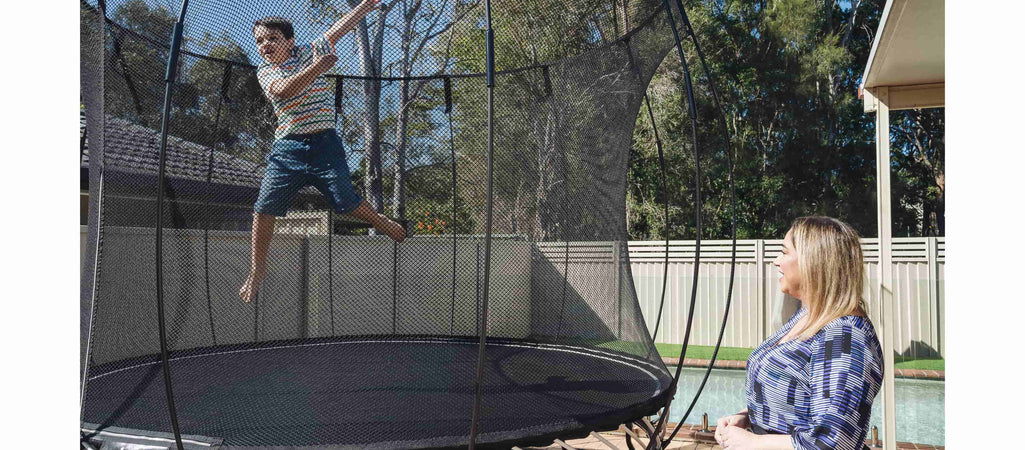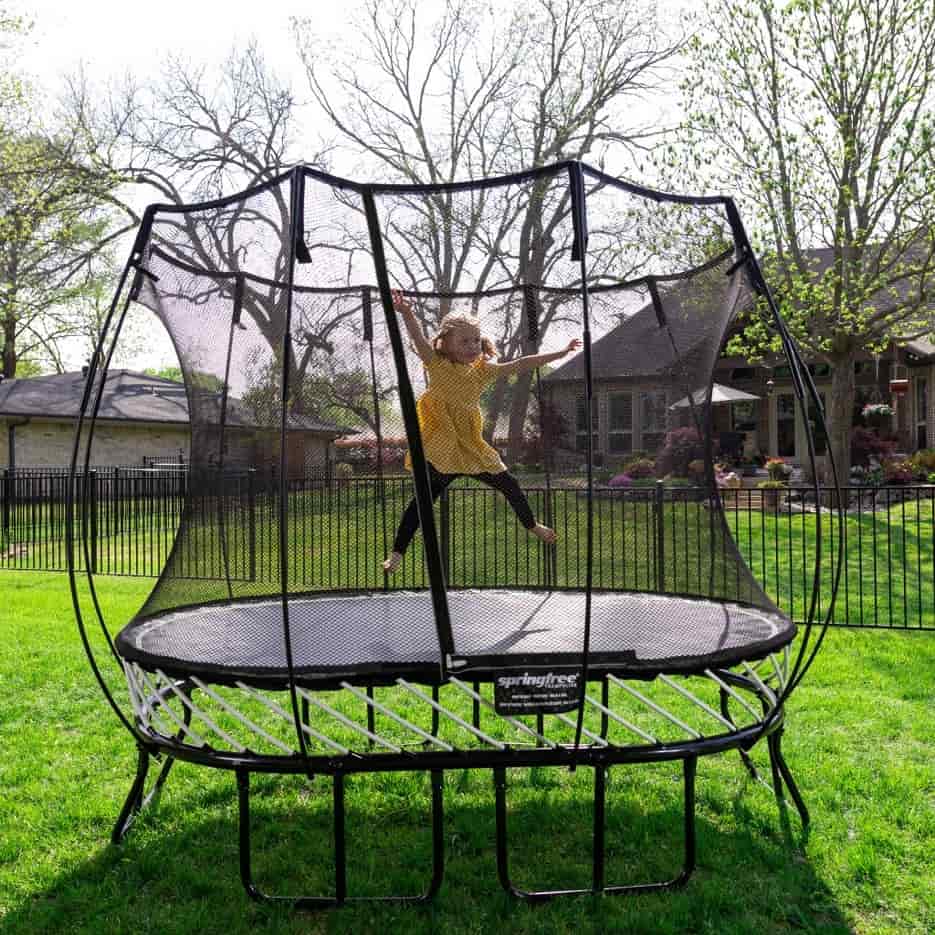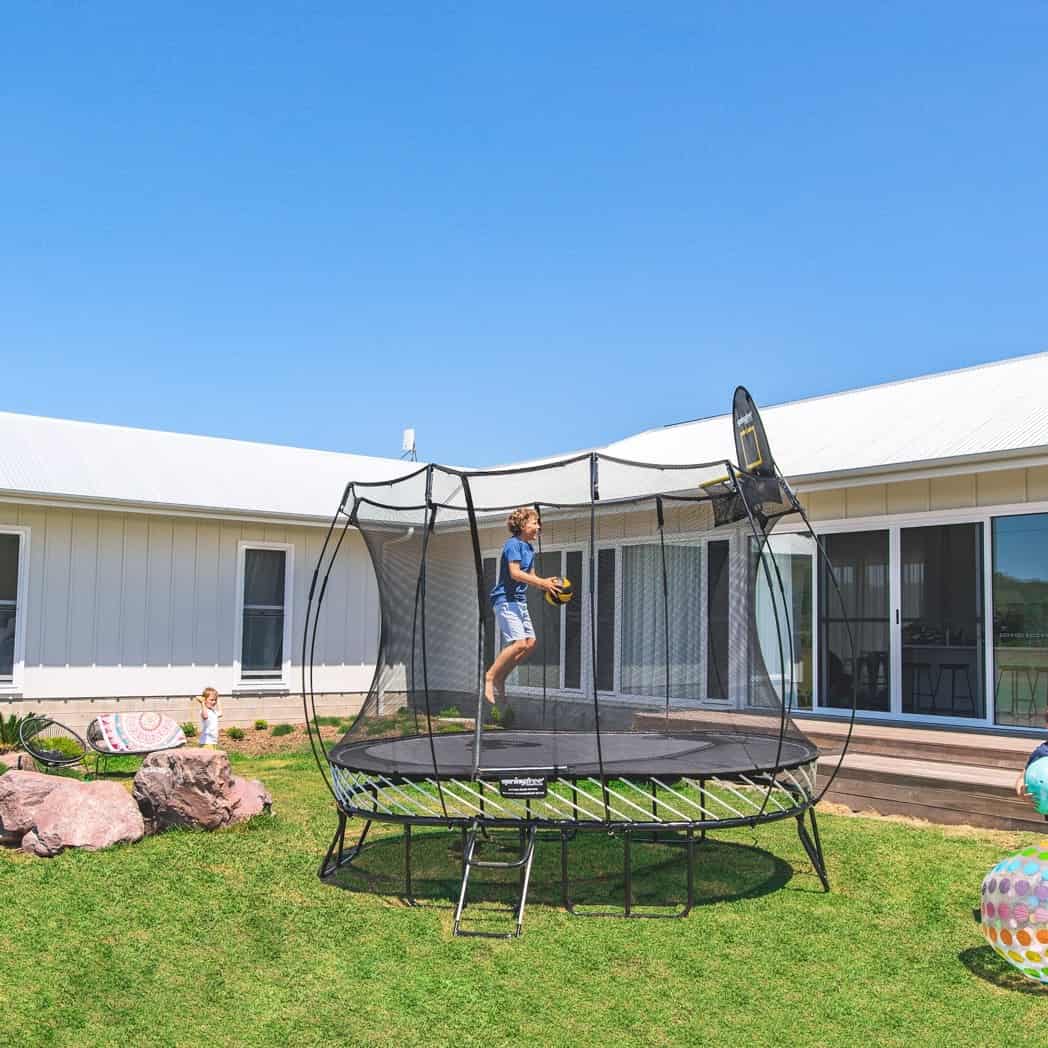Everything You Need to Know About Trampoline Insurance
Learn everything you need to know about trampoline insurance, including whether it's required to have. Compare coverage options and costs!
min read

Trampolines have been a source of joy for children since they were popularized in the mid-20th Century.
However, there’s no getting around the fact that trampolines can be dangerous and trampoline safety is paramount. According to Policygenius, over 100,000 people go to the emergency room for a trampoline injury.
This ties into our conversation today, where we will use our decades of trampoline expertise at Springfree Trampoline to tackle the somewhat complex topic of trampoline insurance.
We will provide direct answers to the most pressing questions about trampoline insurance, from the list of insurance companies that cover trampolines to whether you need to have trampoline coverage at all. Let’s get to it!
7 FAQ About Trampoline Insurance in Canada
Since trampolines and insurance are multi-faceted, we’re going to break this down by listing out common questions. This way, you will be able to find your question(s) easier!
-
Do You Have to Report a Trampoline to Insurance?
No trampoline law says you have to report your trampoline to your home insurance company. It’s a personal decision that you should make after you weigh what you learn below.
If you have a trampoline, you need to be aware of the trampoline liability risks. It’s similar to a backyard swimming pool. This is because trampolines can be dangerous, and if someone is injured on your trampoline, you could be held liable.
This point will be made multiple times in this article, but if you don’t have trampoline insurance, you’re leaving yourself vulnerable to liability claims.
Also, not reporting your trampoline could lead to the cancellation or non-renewal of your policy coverage, according to Progressive.
-
Why Would You Need Trampoline Insurance Coverage?
Trampolines can be dangerous, and not having insurance coverage on your trampoline could lead you to be held liable for a child’s injury. This means potentially paying out of pocket for medical and legal costs.
Trampolines are considered an “attractive nuisance” by many insurers. Basically, this means children will use the trampoline without properly comprehending the risks involved, making you liable for injuries – even to trespassing children.
Having your trampoline insured also means you might be entitled to a replacement trampoline paid for by your personal property coverage if the trampoline were to be destroyed by a hurricane, tornado or other weather phenomenon (more on this later!).

-
What Insurance Companies Allow Trampolines?
The insurance companies that cover trampolines vary. Some insurers won’t cover trampolines because they think they’re too risky to cover due to the liability risk involved.
However, some companies offer trampoline insurance but there could be stipulations involved (ex: trampoline must have an enclosure net and be fenced in). Talk to your homeowners insurance company and see if they offer trampoline insurance.
-
What Insurance Policy Covers Trampolines?
Here are some of the insurance policies that can cover trampolines:
-
Homeowner’s Insurance
-
Personal Umbrella Insurance
-
Renter’s Insurance
-
Speciality Trampoline Insurance
-
Liability-Only Coverage
The insurer you have will ultimately determine which policy may or may not cover your trampoline.

-
Does Homeowners Insurance Cover Trampoline Damage?
It COULD.
Depending on your policy, homeowners’ insurance may cover weather damage (like wind or a tree falling on the trampoline) or vandalism up to your coverage limit and minus your deductible, according to Progressive. Your homeowner’s insurance also may cover theft depending on your policy.
-
How Much Does Trampoline Insurance Cost?
The cost of trampoline insurance will depend on many factors, such as the type of policy you have, your insurance company, coverage limits, location, personal history and trampoline safety measures (ex: the trampoline has a net).
Trampolines may be covered by your standard insurance policy with no additional charges, or they could cost $50-$100+ extra per year. There is no universal answer to trampoline insurance costs.
-
Does Getting a Trampoline Raise Your Insurance?
Trampolines can raise your insurance, but they could also be covered under your standard homeowner’s insurance policy.
It really depends on the insurance company: Some companies will raise your premium if you notify your insurer of a trampoline. It’s best to have a conversation with your insurance provider to see how adding a trampoline to your policy will affect your insurance costs.

Should You Get Trampoline Insurance?
Trampoline insurance can help protect against financial liability if someone were to get injured. Some policies will also cover the trampoline against weather damage, vandalism or theft.
Now that you have a better understanding of how trampoline insurance works, should you provide coverage for your trampoline?
Here’s our expert advice on whether you need trampoline insurance coverage:
Springfree’s Advice: It’s better to be safe than sorry. Not having your trampoline covered could lead to a lawsuit if a child were to suffer an injury.
Springfree’s Advice #2: The best thing you can do is talk to your home insurer directly about trampoline insurance and ask any questions you may have. Coverage can vary significantly from company to company!
Springfree’s Advice #3: Buy a safe trampoline and place it in a secure location away from impeding structures (fences, sheds, tree limbs, etc.). The safer the trampoline is, the less likely an injury will occur!
That last bit of advice is crucial: Many consumers opt for a cheap trampoline, forgoing the injury risks associated with them. This can come back and hurt you in a big way.
If you want a trampoline to last safely, it’s best to buy a high-quality trampoline first. That alone will mitigate some of the risks involved with liability claims!
10 Rules to Avoid Trampoline Injuries
Another easy way to avoid injuries occurring on your trampoline is to follow some simple ground rules.
In fact, many trampoline injuries can be avoided altogether if you establish and apply rules for all your jumpers.
Since we are the creators of the world’s safest trampolines, we know how to balance having fun with being safe.
As such, we have rounded up a guide on how to use rules to safeguard your trampoline. These trampoline rules include:
-
One jumper at a time.
-
No flipping.
-
No roughhousing.
-
Supervise when necessary.
Check out our article summarizing the 10 Rules to Avoid Trampoline Injuries to see the rest of the list and further protect your family so they can focus on the joy of jumping!
